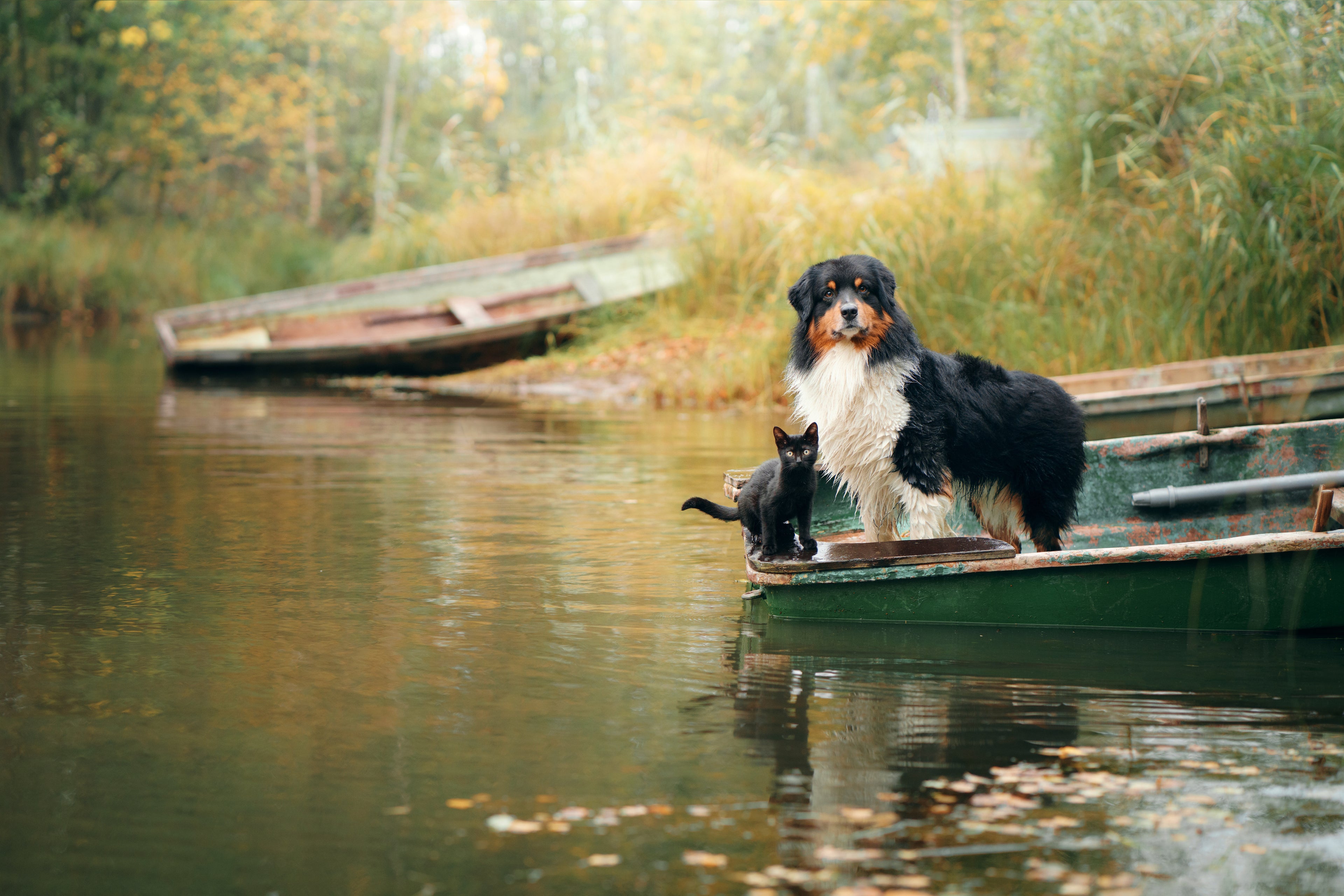We can all rejoice that spring is finally here, and nature is in full bloom. The warmer weather means we’re now all able to spend more time outdoors, however this time of year can bring many hidden dangers that can pose serious threats to our beloved pets.
Unfortunately, it’s all too easy for a delightful spring walk to turn into a nightmare if your inquisitive canine companion decides to devour something that they shouldn’t. Many toxic plants thrive in the warmer spring months and your dog could very easily ingest something harmful, turning that joyful outing into a frightening experience.
By understanding which plants are toxic and recognising the symptoms of poisoning, you can ensure that your spring adventures are worry-free. So, let’s get into everything you need to know to protect your pet this season.
Which Plants are Toxic to Dogs?
Spring brings an array of beautiful flowers and plants, but some of these can be extremely dangerous for dogs. Here’s a list of common toxic plants you might encounter on your walks:
Daffodils: These cheerful yellow flowers are toxic to dogs if ingested, especially the bulbs.
Tulips: Another spring favourite, these flowers can cause serious issues if your dog chews on the bulbs.
Azaleas: Even a small amount of this plant can cause vomiting and diarrohea.
Rhododendrons: Related to Azaleas, these plants can lead to severe health problems and are potentially fatal if ingested.
Foxglove: Known for its beautiful, bell-shaped flowers, Foxglove can cause heart problems in dogs if ingested.
Lilies: While some types of Lilies are more toxic to cats, they can also cause gastrointestinal upset in dogs.
Crocuses: Both Spring and Autumn varieties can be harmful, but Autumn Crocus is particularly toxic.

Symptoms of Plant Poisoning in Dogs
Recognising the signs of poisoning early can save your dog's life. Here are some symptoms to be on the look-out for:
Gastrointestinal Upset – including vomiting, diarrhoea, excessive drooling and/or loss of appetite.
Lethargy - unusual tiredness or weakness.
Respiratory Problems – either difficulty in breathing or rapid breathing.
Behavioural Changes – including excessive agitation or restlessness.
Cardiovascular Issues - irregular heartbeat or collapse.
If your dog shows any of these symptoms, it’s crucial to act quickly. Further detail can be found below.
General Garden Hazards for Dogs
Beyond toxic plants, several other garden hazards can pose risks to your pet:
Pesticides and Fertilisers: Chemicals used within the gardens can be harmful if ingested. Always store these products safely out of reach.
Compost Piles: While great for the environment, compost can contain mould and bacteria that are harmful to dogs.
Sharp Tools and Objects: Garden tools left lying around can potentially cause injury.
Standing Water: Puddles or containers with stagnant water can often harbor harmful bacteria and parasites.

Tips to Poison-Proof Your Garden
Creating a safe outdoor space for your dog is essential. Here’s how to poison-proof your garden:
Identify and Remove Toxic Plants: Replace them with pet-friendly alternatives like Marigolds, Sunflowers or Petunias.
Use Pet-Safe Products: Opt for non-toxic pesticides and fertilisers. There are many pet-safe options available. A great alternative non-pesticide for protecting your pet against pesky fleas, ticks, and lice is the 100% natural Flea Spray. This uses a range of essential oils alongside Quassia and Neem extracts which have a well-established reputation as natural insect repellent. Neem for example is renowned for its effectiveness in treating head lice infestations in humans.
Secure Your Compost: Ensure compost bins are closed and out of reach.
Store Chemicals and Tools Safely: Keep garden chemicals and sharp tools in a locked shed or garage.
Provide Fresh Water: Make sure your dog has access to clean, fresh water to prevent them drinking from unsafe sources.

What to Do If You Think Your Dog is Poisoned
If you suspect your dog has ingested something toxic, time is of the essence. Follow these steps:
Stay Calm: Panicking will only make the situation more stressful for both you and your dog.
Identify the Source: Try to determine what your dog might have ingested. This information will be helpful for the vet.
Contact Your Veterinarian: Call your vet immediately. If it’s after hours, contact an emergency animal clinic.
Follow Instructions: The vet may advise you to induce vomiting or bring your dog in immediately. Follow their guidance carefully.
Bring a Sample: If possible, bring a sample of the plant or substance your dog ingested to the vet. This can assist in diagnosis and treatment.
In Conclusion
Spring is a wonderful time to enjoy the outdoors with your dog, however it’s essential to be aware of the potential dangers that come along with it. By educating yourself about potentially harmful plants, recognising the symptoms of poisoning, safeguarding your garden, and knowing how to respond in an emergency, you can ensure that your dog stays happy, healthy, and most importantly safe, this spring.
Contact Us
For further helpful advice, visit our pet advice blog or contact us with any questions. Our friendly customer care team will be happy to help.



2 comments
Thank you so much for this information, always great to know as much as possible to keep out little furbabies safe
Watch out for Dogs Mercury growing in the countryside. It is extremely toxic. My dog has vomited violently when he has ingested the foliage. The trouble is that he loves to eat it. Seven times he has done this. The first time he ate lots and vomited 11 times. After that I was very vigilant when I found out what it was and what it does. The next three times he dived in to eat small amounts before I could stop him, but he only vomited once on each occasion. The last three times I was quick enough to see what he intended doing and he was stopped as he snapped his teeth on a leaf and fortunately did not swallow it. Watch out for this plant for I don’t think it does the kidneys and liver any good if your canine friend has a liking for it.